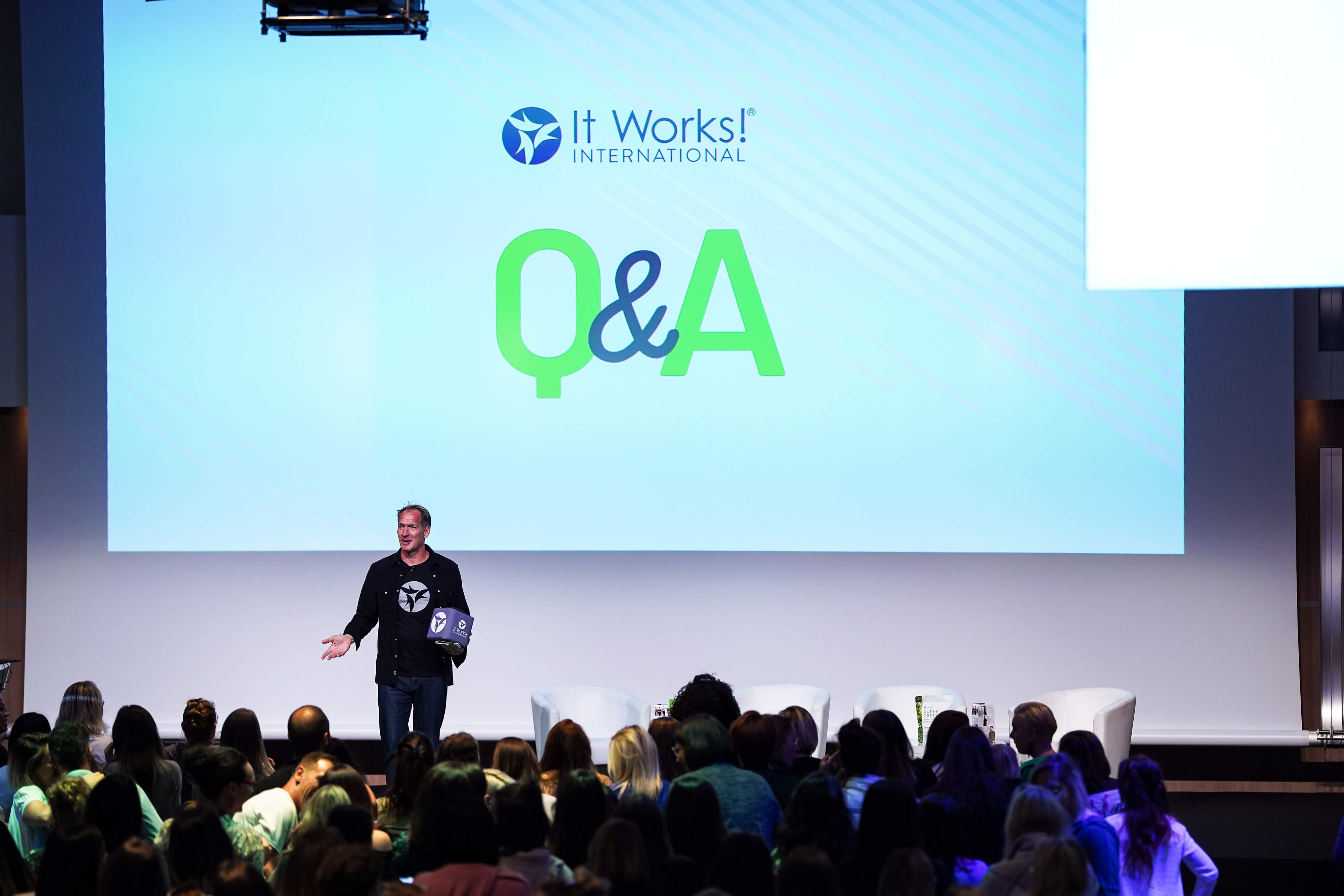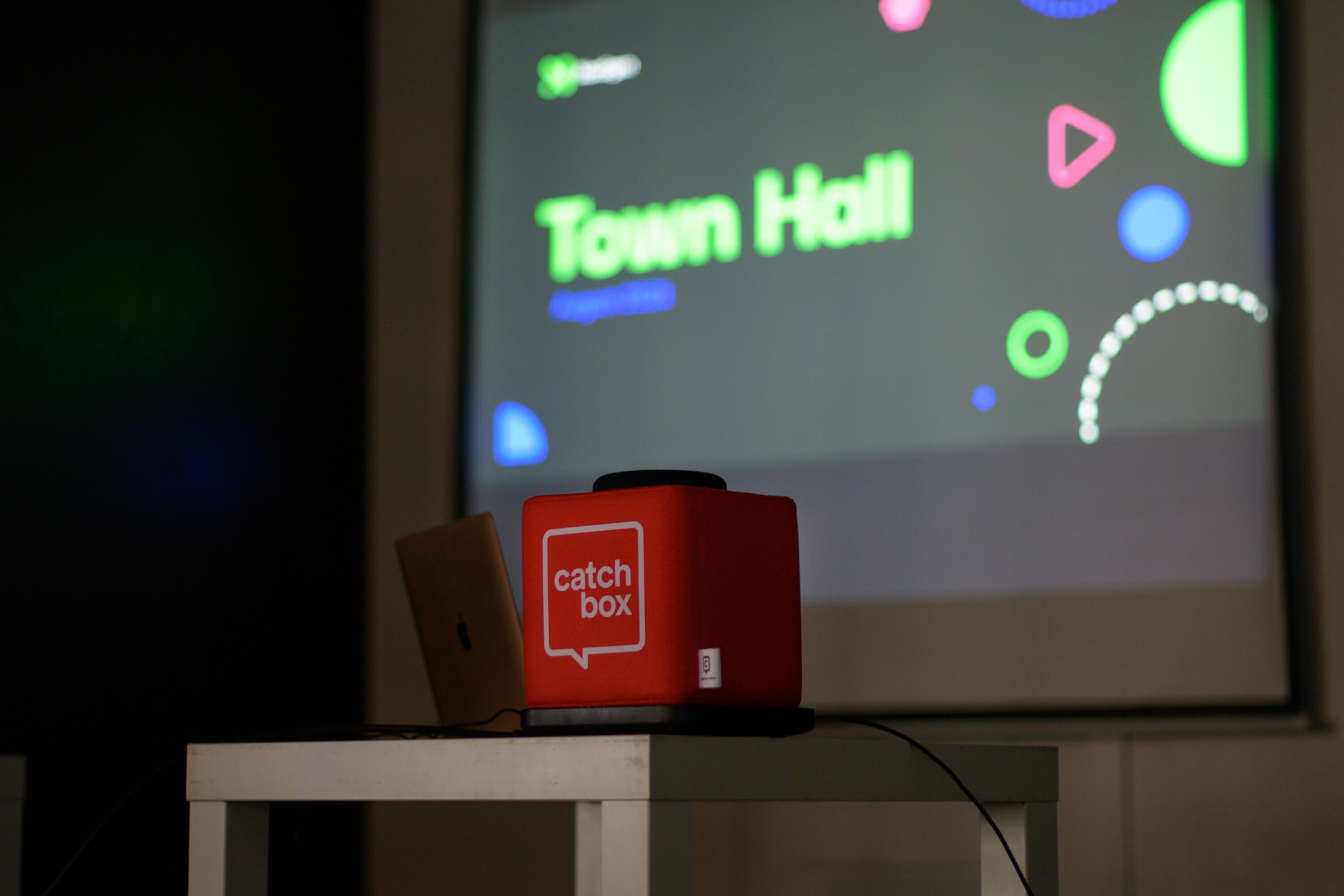How to host a hybrid event
3 simple rules to help event organisers maximize the impact of hybrid events

Edited on: April 22, 2025
Just like hybrid work and meetings, hybrid events have exploded in popularity. They're a great way to gather large audiences while keeping a core element of what makes events engaging– in-person participation.
Hybrid events open the doors to attendees that might otherwise be unable to join due to time, cost, or other considerations – people can connect from the comfort of their own homes or offices, thus increasing reach and making every event an inclusive and potentially international one.
If you haven't done it before, organizing a hybrid event can seem like a daunting task. But with the right tools and guidelines, anyone can host a memorable and engaging hybrid event.
Let's take a closer look at what is a hybrid event, why organizing one shouldn't intimidate you, what are the 3 rules of hosting a hybrid event, and why such events are only going to grow in popularity.
What is a hybrid event?
Hybrid events make use of technology to create a unified event experience for a dual audience of virtual and in-person attendees.
Audience engagement and participation are at the core of hybrid events and are typically exemplified by various inter-audience communication channels, engagement activities, and a shared viewing experience. At a hybrid event, a remote participant should be able to do almost anything that an in-person audience member can do.
Events that can happen in a hybrid format include internal events such as all-hands meetings, and training seminars, as well as external events such as conferences and tradeshows.
Organizing a hybrid event
In many ways, a hybrid event is just like any other. A strong agenda with interesting content must be at the heart of it all. Interactive activities are strongly recommended to avoid dry keynotes. And the invitations and marketing strategies will resemble those of typical in-person or virtual events.
The technical setup for a hybrid event is also less intimidating than it may seem at first. In most cases, standard AV equipment will do the job just fine, and choosing a digital event platform to host remote attendees is easier than ever thanks to a wide offering of such solutions.
The main way in which hybrid events diverge from others is the factor of having two audiences.
As such, a successful hybrid event will be engaging to both in-person and online participants.

The 3 rules for hosting a hybrid event
Whether you're planning a hybrid conference with thousands of participants or just a company training session with a couple of dozen attendees, the following 3 rules for hosting a hybrid event will help increase engagement and overall attendee satisfaction.
1. Connect the audiences
To avoid having a portion of attendees feeling left out, it's imperative to ensure that both audiences have as similar experiences as possible. Everyone should be able to ask the presenter questions, hear what's being said, and even engage with other audience members.
For example, an audience microphone for the in-person attendees is all but mandatory to ensure those at home can hear what's happening. The Catchbox throwable wireless microphone is the perfect tool for the job.
Not only does it ensure fantastic audio and a unique branding opportunity, but it can also be thrown from speaker to speaker, reducing any downtime tied to moving the audience microphone around.
During larger hybrid conferences, members from different audiences can be connected directly through, for example, a networking app to ensure people don't miss out on one of the main reasons for attending such events.
2. Use digital engagement tools
Engaging the separate audiences in united activities will help bridge the gap between the two. Digital tools are the perfect means to do that because all you need for participating is a smartphone and it doesn't matter which audience you're a part of.
Simple things such as launching real-time polls during talks to get audience input or creating public quizzes to keep people attentive are small but powerful engagement techniques that offer a shared activity for all involved. Interaction apps such as Slido can help you do just that and breathe some extra excitement into all sorts of hybrid events.
3. Have an in-person host (and an online moderator)
Be it a hybrid work seminar or a hybrid conference, do your absolute best to have the main event MC or presenter be in-person. It's challenging to moderate discussions remotely and makes for a significantly less engaging experience. Plus, it will be more difficult for a remote host to react to any technical difficulties and the hybrid event can devolve into a hot mess if it's the host themselves who are experiencing them.
When you have an in-person audience – use them! Create a conversation between the audience and the moderator by using the Catchbox Plus system, which includes the throwable Cube mic and two types of microphones for the presenters (Clip wearable and Stick handheld). This ensures that remote attendees will be able to hear both sides of the conversation.
For larger events, it's sensible to have an additional online moderator that engages with attendees and responds to any technical issues on the digital event platform.
This will spare the in-person MC having to respond to highly-specific technical questions that aren't relevant to the in-person audience and ensure a smooth flow of the event.
3 steps to mastering hybrid events
By following the 3 simple rules outlined above, you'll create a memorable event that all participants will enjoy. Be it an all-hands meeting or an international conference, your goal is to offer an engaging experience to all attendees, and integrating both audiences is a key element for achieving this.
Sure, this might mean purchasing new software and hardware, but it's a worthwhile investment because hybrid events will only continue to grow in popularity.

Why hybrid events are here to stay
Hybrid events give you the reach of virtual events with the energy of live interaction. Whether it’s a hybrid work seminar or a hybrid conference, offering the option to attend virtually or in-person boosts accessibility, expands your audience, and delivers more value to every participant.
With solutions like Catchbox Plus—a hybrid wireless microphone system that supports up to four mics and integrates easily with your hybrid event platform—you can create high-quality, interactive events without the complexity.
Conclusion
While hybrid events may have risen from necessity, their value is now clear. The benefits they bring to organizers and participants alike—broader reach, more flexibility, and better engagement—guarantee they’ll remain a central part of how we connect.
The format will evolve with new tools and ideas, but the core rules for hosting a hybrid event will stay the same: integrate your audiences, keep them engaged, and ensure everyone is heard.
Related reads
How to plan a company meeting that actually works
Not sure if your meeting room is up to the task? Use this simple checklist to avoid the #1 reason meetings fall apart—and plan an event your whole team will thank you for.
Crystal clear audio: why it matters for live captions
Are your meetings truly accessible? Learn why clear audio isn’t just about quality—it’s a compliance essential. From live captioning to inclusive recordings, this is the guide IT and facilities teams can’t afford to skip.